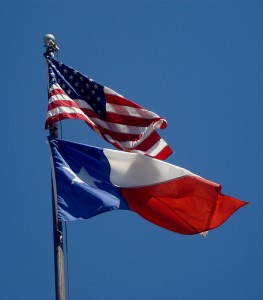What Was Life Like In 1776 In Texas And Mexico?
Texas, the geographic area now called the U. S. Southwest and Northern Mexico, in 1776 was a war zone.
The Spanish settlements, ranchos, haciendas and missions were besieged by hostile Native Americans tribes and clans of the Apache, Comanche, Karankawa, Yaqui, Tarahumara, Seri nations and the non-aligned groups of the Sierra Madre Oriental commonly called Chichimeca. Local militia units had to escort travelers as well as periodically mount campaigns against marauding tribes and clans. Cattle, horse, sheep and goat ranchos were frequently raided as were merchants and small groups traveling on the caminos real. Peace or trading treaties signed by local governments with a specific tribe or clan were not respected by other tribes and clans even when they belonged to the same Native American Nation. Hence the continuous war zone status.
Complicating matters was the fact that politically and militarily, the provinces and their respective city councils were governed and answered to the Vice Regal government located in Mexico City. The Viceroy distributed whatever laws and regal orders were issued by the Spanish Crown and the Council of the Indies that overlooked the governance of the Spanish American colonies. Laws, edicts, proclamations and taxing orders issued by the crown in Spain and distributed by the Viceroy in Mexico City were not always applicable to settlements far from the centers of government. Hence distant Bexar, Goliad, Nacogdoches, El Paso, Taos, Santa Fe, Tucson, San Francisco and Los Angeles frequently reacted by holding the law or order in hand, making the sign of the cross and stating cumplo pero no obedezco (I comply but will not obey). The document had been acknowledged, properly read, and set aside not to be enforced.
The plight of the local militias so far from the seats of government in Spain and Mexico City forced them to contract middle men to collect their salaries and get their weapons, ammunition and armament. Hence the troops on the frontier were poorly armed and equipped resulting in adopting Native American weapons and tactics. At the same time, some Governors and militia captains were charged and found guilty of corruption in selling the weapons, munitions, armament and supplies to their troops at a profit.
Wishing to correct the dismal situation on the northern frontier of New Spain, in May 1776 the Crown created the Military Commandancy of the Interior Provinces of New Spain. The frontier provinces of Texas, Coahuila, New Mexico, Nueva Vizcaya, Sinaloa, Sonora, Baja California and Alta California were placed under the command of the Commandancy General of the Interior Provinces. The first to hold the post was Brigadier General Theodoro de Croix. He held the post until 1782 when he was appointed Viceroy of Peru and turned the Interior Province to Phelipe de Neve. From that date until Mexico gained independence in 1821, the Interior Provinces saw the restructuring into the Interior Province of the north, east and west, and then only east and west with Nuevo Leon and Tamaulipas added to the Interior Provinces of the East including Texas and Coahuila. The four Spanish colonial provinces, later Mexican states thus formed a regional identity with little loyalty to Madrid and Mexico City. Regional rebellions and separatist movements were to follow until the 20th Century.
During the same fateful year of 1776, the British American colonies declared themselves independent. Today people in Texas and the U. S. Southwest forget that events in 1776 in the British colonies were a foreign affair. The July 4th Declaration of Independence, rebellion and eventual union of the thirteen former British Colonies into a new country called the United States all occurred in a foreign country.
Spanish American citizens from Texas and Louisiana might have assisted the British American rebels but it was nonetheless intervention in a foreign affair in a foreign country. So why celebrate the Fourth of July in Texas and the U. S. Southwest? After all, many of us are descendants of families that settled in Texas and the U. S. Southwest long before the creation of the United States and Mexico. So why celebrate an incident that occurred in 1776 in a foreign country?
What we celebrate – with or without fireworks and speeches – is the preached but not always practiced political belief that “all men are created equal”. We also celebrate the thought that all people have the inherent right of self government, freedom of religious expression and freedom of the press. Bottom line, we celebrate the thoughts written on a piece of paper that changed not only the British American colonies, but the world. Unfortunately there are those among us who betray the principles written in 1776. Special interest political parties and religious groups are currently doing their best to deny through Legislative, social and religious acts those thoughts and principles set in the Declaration of Independence and Bill of Rights. I strongly recommend the holier- than-thou fundamentalists, Tea Party members, right wing ultra conservative Republicans and state legislators consider reading the two documents in detail.
In closing we urge you to consider the significance of 1776 when the Spanish North American frontier provinces, settlements and residents got their first taste of independence from Madrid and Mexico City. Also consider the principles set in writing by British American colonists that many today tend to ignore and betray. So with or without fireworks, enjoy your Fourth of July activities and remember the historical significance of 1776.
Richard G. Santos is a writer who lives in Pearsall, Texas.
[Photo By Big C Harvey]

